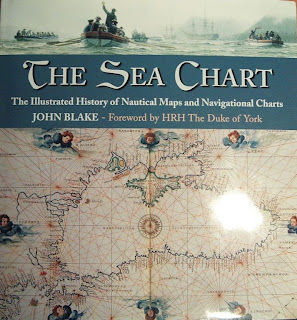- Study the terminology and symbol system used on nautical charts. This is a highly specialized abbreviation system, but once you learn the basics, the chart will transform from an incomprehensible document to a highly informative "road map" of the waterway. There are symbols that tell you about man-made navigational aids along your way, relevant structures on the shore, water depth and information about the earth's magnetic field to name only a few of the categories.
- Select the correct chart or charts for your journey and study them before setting out on your boat. The chart can be used to plot your course. Before beginning you will want to review it carefully and annotate it. Keep in mind that charts are updated anywhere from every six months for high-traffic areas, to every 12 years for more remote locations. Be sure you have the most recent chart version because anything man made, like buoys, navigational markers and structures along the coast, will be subject to frequent change.
- Double check the title block on your chart. This is a "key" to the map telling you what units of measurement are used on this particular chart and useful information of that sort. Keep in mind that measurements like water depth might appear in meters, feet or even fathoms. You need to know what units are being used and what they mean for your craft.
- Find the compass roses on your chart. A compass rose tells you how the chart is oriented relative to true north and magnetic north. One chart may have several compass roses in various locations. You will need to be aware of these as you read the chart so you are oriented properly. This can be especially important on open water where there are few or no visual markers.
- Make note of the bar scale on your chart. The bar scale measures distance on the chart. Here again you must be clear about what the units of measurement are. Bar scales might be read in nautical miles or some other unit. On a chart of an inland waterway the units are probably fairly small, reading in meters, for example.
How to Read Sea Charts
Nautical charts map open waters, rivers, bays, harbors and inland lakes providing information on depth and what's beneath the surface. Close to land they detail the location of power lines and other potential navigational hazards. Like piloting a large boat, reading charts is a specialized skill.









